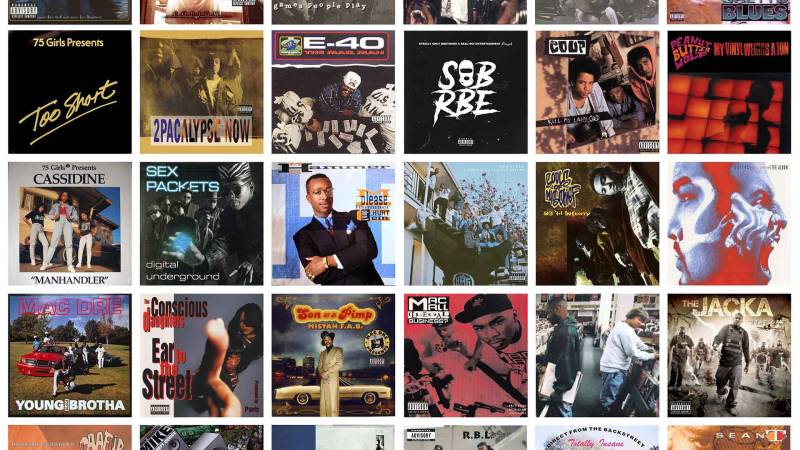In the 1980s, Bay Area hip-hop grew from an underground youth subculture to a commercial force. A teenage Too Short, who began selling custom tapes out of his trunk, set a precedent for Bay Area rappers’ independent hustle and released his first major-label album by the end of the decade. MC Hammer went platinum and kicked off the career of hitmaking female rap group Oaktown 3.5.7. By 1989, a teenage Mac Dre, the multifaceted Digital Underground collective and the staunchly political rapper Paris all made their debuts. The ’80s show that Bay Area rap has never been just one thing — it has contained street, commercial, experimental and revolutionary elements from the beginning.
Listen on Spotify and YouTube.
1990s
Often referred to as the golden age of hip-hop, the 1990s saw the solo debuts of foundational Bay Area figures, including E-40, who has made hits in every decade since. Major labels took an interest in mobb music with artists like Spice 1 and Keak Da Sneak’s 3X Krazy. 2pac soaked up game from the Bay’s rap hustle and revolutionary politics. Conscious Daughters and Female Fonk paved the way for streetwise women who followed. And the Bay Area fostered a thriving alternative and conscious hip-hop scene that included The Coup, Hieroglyphics, Blackalicious and Mystik Journeymen.
Listen on Spotify and YouTube.
2000s
The first word that comes to mind to describe the 2000s in the Bay Area is “hyphy.” What began in the streets turned into a musical movement fueled by eccentric self-expression, rebelliousness and hard partying. Keak Da Sneak gave hyphy its name; Mac Dre encouraged people to embrace their inner weirdness; and E-40, Mistah F.A.B., the Pack, the Federation and many others made music to go dumb to. But the aughts were more than just hyphy — Mystic and Zion I put poetry to personal and societal struggles, Goapele and Keyshia Cole made R&B classics and Deep Dickollective unapologetically rhymed about their queer, Black experience.
Listen on Spotify and YouTube.
2010s
The beginning of the 2010s was sort of a comedown from the hyphy movement with hits like Clyde Carson’s “Slow Down” and D-Lo’s “No Hoe.” A new generation found its voice with the emergence of new artists like the party-centric HBK Gang, streetwise SOB x RBE, mobby Kamaiyah and thoughtful Rexx Life Raj. G-Eazy and Saweetie made big, hyphy-inspired commercial hits. And Kehlani, who got her start with HBK, emerged as a savvy R&B songwriter.
Listen on Spotify and YouTube.


